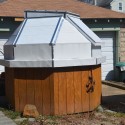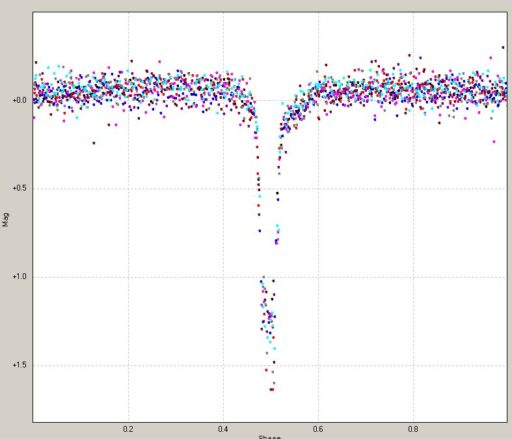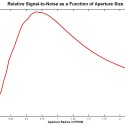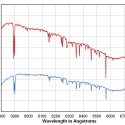The first dome, the northern of the pair, which I refer to as the North Dome, was built in the summer of 2006. I designed and built the building myself, though the shape of the "dome" is most definitely inspired by the WIYN Observatory on Kitt Peak,

Astronomy from Beverly Hills, MD 21214!

Established in 1926, Beverly Hills (zip=21214) is a small subdivision of Baltimore, Maryland, a 13-block postage stamp in the city’s northeastern section, roughly four miles from downtown. No movie stars, few if any swimming pools, but home to Beverly Hills Observatory, a privately-owned astronomical observatory engaged in research on a variety of topics particularly relating to stellar astronomy. On almost any clear evening the twin 16-inch telescopes are engaged in gathering photometric and spectrographic data of cataclysmic variable stars, eclipsing binary stars, Wolf-Rayet stars, massive young stars with vigorous stellar winds, and just about anything else that piques my interest. Welcome!

For most of the month of June I gathered photometric data for the star OV Boötis (OV Boo), an eclipsing cataclysmic variable star with a very short orbital period. The data were acquired using the #2 16-inch with an SBIG ST8xme camera and clear filter. The images were calibrated using BHO_ImageCalibration, and reduced using the […]

Presented here is a description of a program for time series photometry based on the techniques of optimal extraction. The program is fed a list of images to reduce, then the user indicates the program star, up to ten comparison stars, and a psf model star. PPX then finds stars in each image, determines object matching from one image to the next (shift, scale, and transpose) using similar triangles, then uses the image mapping coefficients to … read more >>>>> about PPX: An Optimal Extraction Program for Time Series Photometry

A set of throughput tests was conducted using a Meade 0.63x focal reducer and a Celestron 0.63x focal reducer in concert with a Santa Barbara Instrument Group (SBIG) Self-Guiding Spectrograph (SGS) and a Celestron 14-inch Schmidt-Caseagrain telescope. The results of this analysis would suggest that one should NOT use focal reduction that would produce an effective f-ratio of less than about … read more >>>>> about Relative Throughput Tests Using Focal Reducers with a Santa Barbara Instrument Group Self-Guiding Spectrograph
Weather This is the first evening of real autumn! Today was partly cloudy and fairly warm, maybe 75F – but tonight the temperatures are rapidly dropping and it is quite windy. The low tonight should be in the mid-upper 40s. ... Read more →
Rig 1 Another set of spectra for the BRITE/UMontreal campaign on P Cyg and Deneb. I am seriously behind in getting these data calibrated and sent. Something for the next few days as the clear weather is supposed to go... Read more →
August 17/18 – First Night for AP1200 in the North Dome No entries here for two nights past. The first was the night of August 17/18. On that night I was able to get a full set of spectra for... Read more →
Weather Well, after yesterday’s 7+ inches of rain …. Tonight is fairly clear (still slowly improving from the smoke haze). I could actually see second and third magnitude stars even after moonrise. Good seeing – around 1.8 arcsec. Very little... Read more →
Wow – two clear nights in a row. About the best stretch of the entire summer so far, testament to how bad this summer has been. In fact the past 18 months or so has been much more cloudy than... Read more →
Weather For most of the past week it’s been pretty “clear” – that is, fairly cloudless and cool. But large wildfires in the Canadian NWT have spread smoke into the upper atmosphere that has hazed out the entire east coast... Read more →
Guess What I Was Doing New Year’s Eve? It was clear here on New Year’s Eve and I decided to try something a bit different. I installed the 150 line/mm grating in the spectrograph and tried to acquire a spectrum... Read more →
Total Lunar Eclipse of October 8, 2014
I had to be at the studio early the morning of the eclipse, so these were taken from a location near the studio (on Gable street) which had a pretty good western horizon – at least for an industrial area... Read more →
Nova Delphini was discovered on the 14th of August, 2013 by Japanese amateur Koichi Itagak. Eventually designated V339 Delphihi by the International Astronomical Union, Nova Delphini became an easy naked-eye object throughout the end of August and one of the... Read more →
After many false starts this year I finally got back out to the observatories and did some real observing! And the target of the first nights of photometry for 2014 is the eclipsing nova-like (NL) star UX Ursa Majoris. Discovered... Read more →
Calibrating the Optec TCF-s Temperature Coefficient for a Celestron C14
About two months ago I acquired a used Optec TCF-s focuser for the telescope in the North Dome. The focuser is designed to compensate for the changing focus position of the telescope as a function of temperature (TCF = Temperature... Read more →
The Observatory Was Nice This Year – Look What Santa Brought!
The observatory was very good this year so Santa brought it a very nice present – a new telescope for the South Dome! Actually it isn’t all that new. It’s a Meade Instruments 16-inch Schmidt-Cass likely from around 1994 or... Read more →
Automating the LHiRes III Calibration Lamps
The recent upgrades to the LHiRes III spectrograph include an improved calibration lamp assembly that basically has three positions: Straight through (normal data acquisition) Flat Calibration Lamp Neon-Argon Wavelength Calibration Lamp There is a multi-pin connector that allows the observer... Read more →
Testing the Wavelength Stability of the LHiRes III Spectrograph
Last summer and fall I participated in the “BRITE Stars in Cygnus” campaign monitoring the radial pulsations of Deneb’s atmosphere. This involved measuring radial velocities by determining the wavelength shifts of the Si II λλ 6347 & 6371 lines,... Read more →
